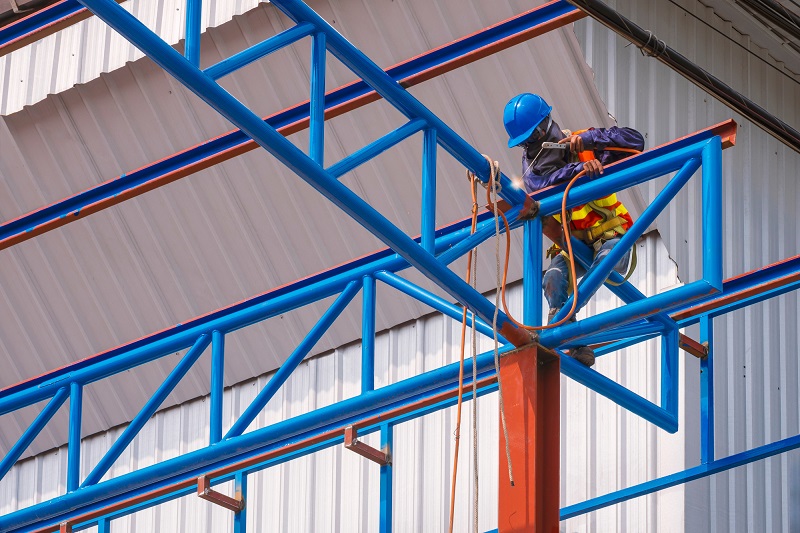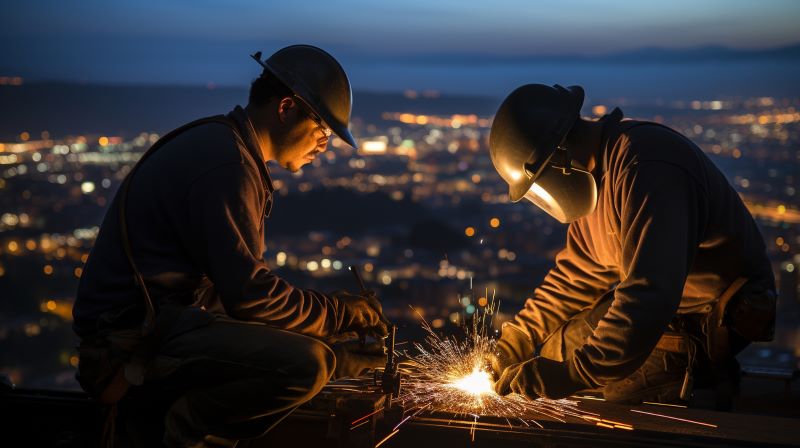Metals are primary components in urban buildings, making welding an essential construction activity. Builders can’t erect skyscrapers and reinforce concrete structures without metal frames.
However, the dense confines and complex regulations of cities create distinct challenges for welding professionals. As such, urban construction projects must maintain safety and compliance when welding in populated zones.
In this article, we’ll discuss the most pressing complications and solutions for welding projects in the city.
Welding Challenges In Urban Construction
Erecting buildings in populated areas makes it crucial to hire expert welders and purchase high-end cigweld products online in preparation for the following setbacks:
1. Tight Spaces And Access Challenges
Urban construction zones face tight access points for workers and their heavy welding equipment. Congested floors and ceilings full of existing systems and infrastructure can make navigating small spaces more difficult without damaging other utilities.
Weld positions will require additional scaffolding or awkward operator contortions, unlike rural projects with more open site entries and layout mobility. On top of transporting bulky tanks, filler materials, and safety gear, these can cause delays and additional labor hours.
2. Environmental Considerations
Welding creates excessive noise from machine use, grinding, and hammering beyond safe urban decibel limits. Sparks and chemical plumes, if not properly mitigated, can also rain down or drift upon pedestrians below.
3. Fume Hazards
Welding low-alloy steel releases manganese into plumes. This necessitates immediate site-level exhaust venting so crews and downtown pedestrians can avoid lung irritation and contamination triggers well below the limits set by the Occupational Safety and Health Administration (OSHA).
4. Noise Levels
Construction welding activities must not exceed the 85dB threshold in many mixed-use urban quarters across neighborhoods and businesses. This can be challenging, as welding and plasma-cutting procedures generate excessively loud noises.
5. Operational Regulation Factors
Many delays in urban welding jobs come from regulatory orders that vary from state to state. Some cities impose more stringent rules than others, causing delayed re-permitting, inspections, and unexpected work stoppage orders.
6. Administrative Delays
Safety officers are responsible for enforcing building codes and minimizing public disruption. Sometimes, this might lead to rescheduling certain activities, chipping away at budget resources. Thus, in many cases, work is conducted at night, making it more challenging to keep urban construction sites safe.
7. Multiple Oversight Entities
From transportation departments controlling curbside deliveries to environmental agencies monitoring containment plus zoning officials ensuring code compliance, urban projects juggle a dozen disjointed regulators compared to simpler rural plant approvals through consolidated state offices. Maintaining valid permits across all entities slows overall timetables.

Innovations And Solutions
Savvy contractors must be equipped to handle the unique demands of these sites if they want to keep their budgets and timelines intact. Safety officers can position their skilled teams to thrive in the booming construction sector by understanding evolving obstacles and advances in urban welding processes.
1. Sensor-Wearing Welders
Welding crews must prioritize bi-layer protective coverage, portable noise barriers, and strategically placed exhaust ventilation to meet strict city safety standards once access routes have been identified. Proximity sensors should be worn to avoid surprise contact with other subcontractors in dense build sites.
2. Enclosed Welding Systems
These all-in-one customizable trailer boxes house triple-filtered ventilation mechanisms to capture welding smoke. They also have racks for compressed gas tanks that secure the cylinders from tipping en route. Assistive frame doors fold down, allowing welders positioning flexibility with magnetic wheels that roll over debris in the construction sites. These enclosed units safeguard against environmental hazards for quality welds.
3. Air Filtration Cube Retrofits
Constructing interlocking filter cube grid walls around welding build sites allows adjustable protection screening against dust, debris, and chemical traces. Self-contained units with minimum efficiency reporting value (MERV) 13 filters block almost 100% of 1.0 to 10 μm particles, meeting strict clean air safety requirements for neighboring buildings in the most stringent global cities.
4. Noise-Reducing Rigs
Construction managers should anticipate rental costs for acoustic shells or engineered noise-canceling rigs that allow 110dB arc welder operations.
5. Streamlining Approvals
Virtual 3D build mock-ups allow simplified permit and inspection approval before the project’s onset. Direct communication links between site weld operations and city officials contribute to faster issue resolution.
6. Specialized Training
Welding professionals can better address building code complexities with site-specific urban instruction programs when plans inevitably shift.
Immersive VR rigs recreate detailed situation simulations to build knowledge about ideal positioning, gear settings, and operational habits before visiting congested real job spaces. This approach can be more favorable than immediately introducing weld trainees to complex urban regulatory procedures and risky environments.
Final Thoughts
Fast-paced urban zones are teeming with dense structures and complex building regulations, which could impact safe, compliant, and profitable welding work. Fortunately, today’s innovations, alongside enhanced operator skills, offer contractors reliable ways to navigate complex downtown builds.
With strong communication channels between disconnected oversight entities, welding professionals, and the public, cities can uphold robust development visions without compromising critical safety assurances.

